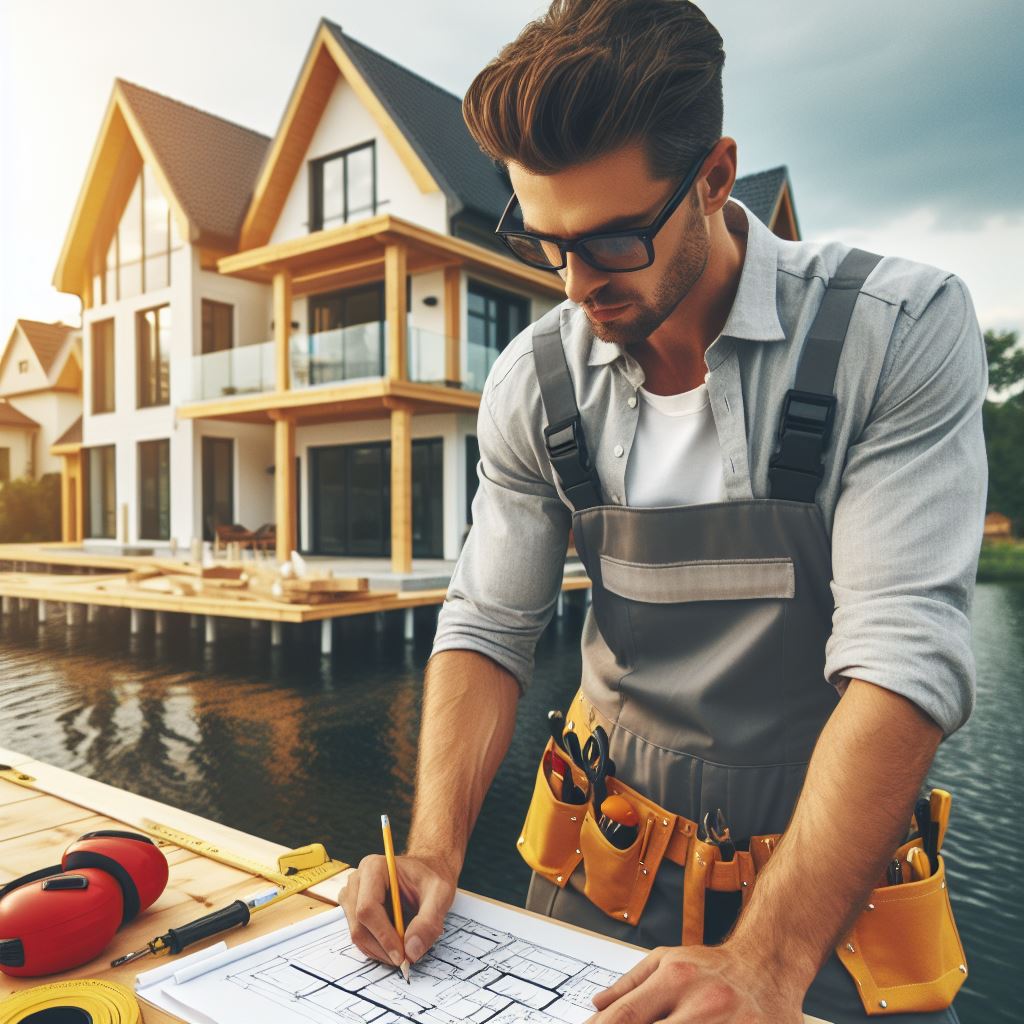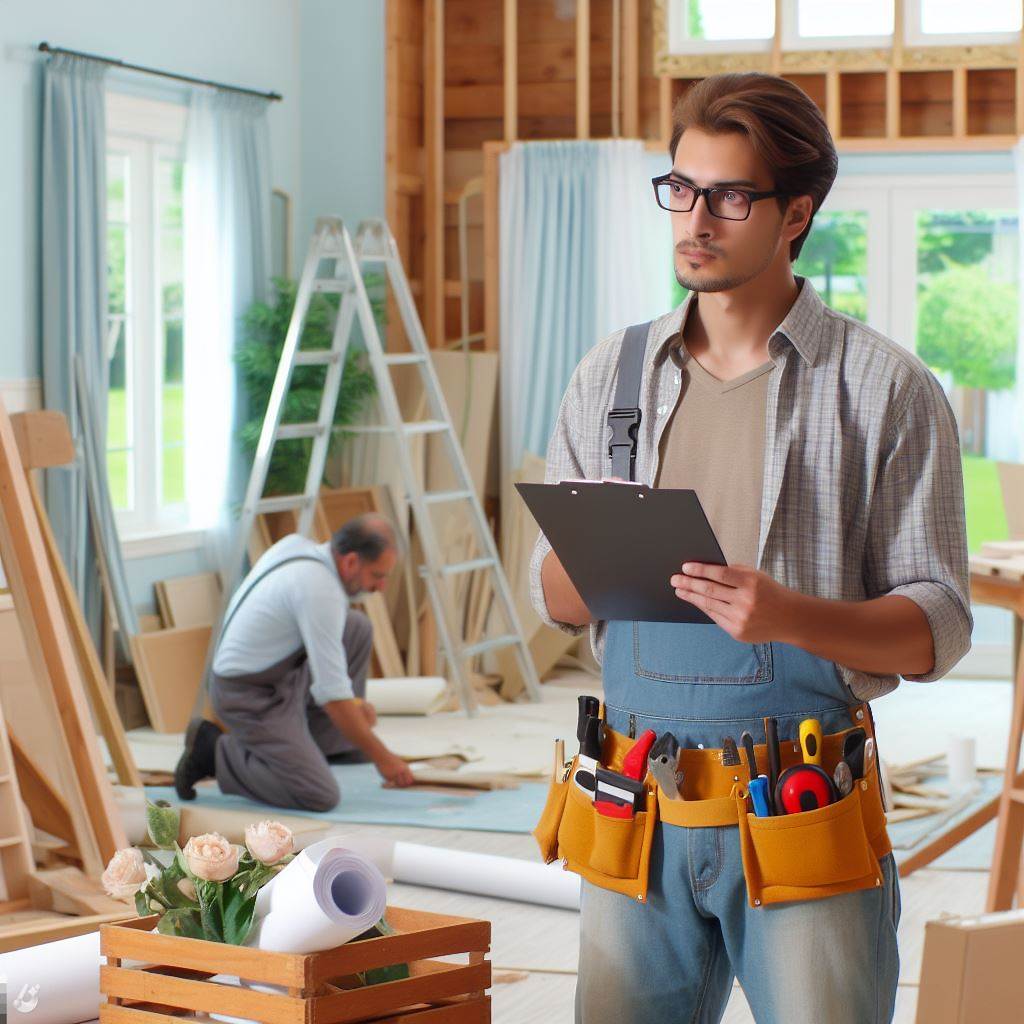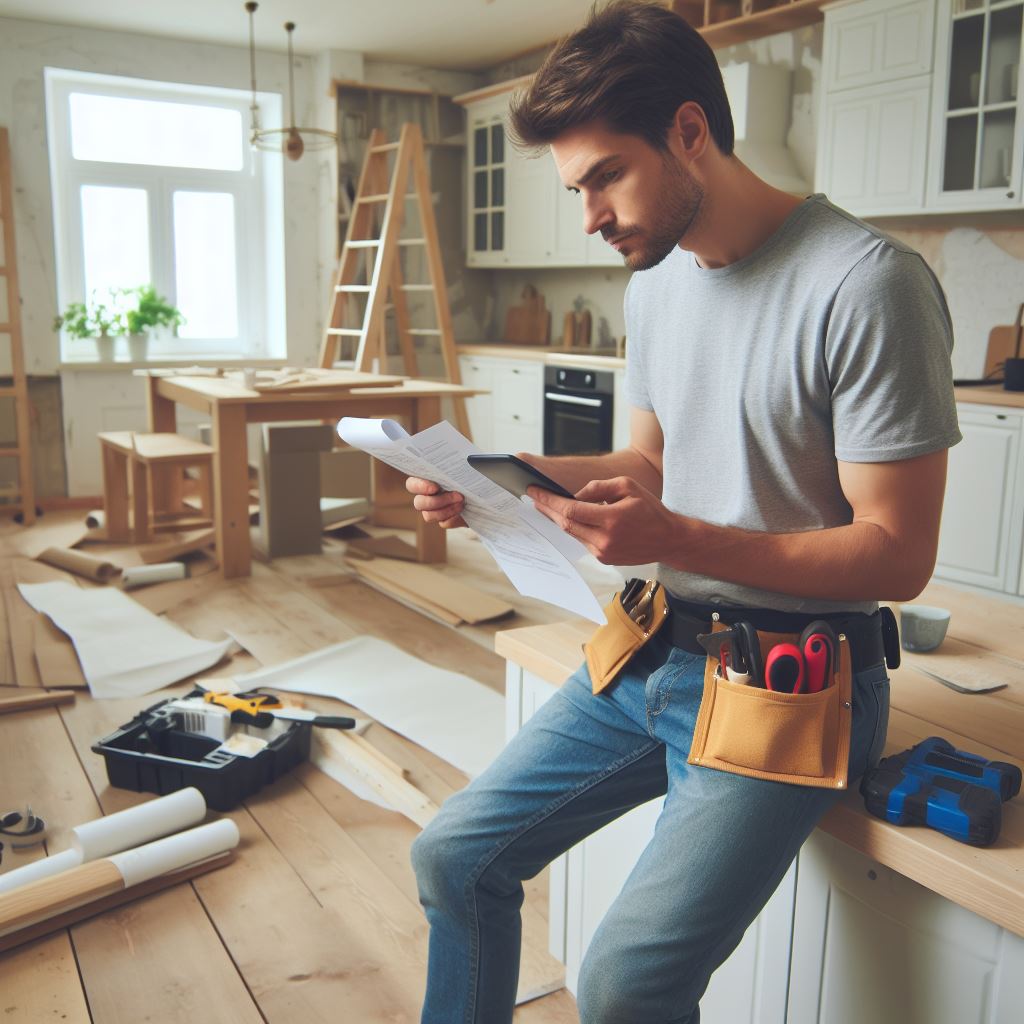Introduction
Building codes play a vital role in the construction industry.
They are a set of regulations and standards that serve to ensure the safety, health, and welfare of building occupants and the general public.
These codes are constantly updated to reflect technological advancements and lessons learned from past experiences.
The purpose of this blog post is to shed light on the key changes in building codes that will come into effect in 2024.
By discussing these changes, we hope to inform and educate professionals in the construction industry, as well as anyone interested in understanding the evolving standards in building safety.
The blog will cover a range of important changes, such as updates to fire safety regulations, energy efficiency requirements, structural design standards, and accessibility guidelines.
Each change has been carefully considered and implemented to improve the overall quality and safety of buildings.
By staying up-to-date with the latest building codes, industry professionals can ensure compliance with legal requirements and best practices.
This not only guarantees the well-being of occupants but also protects against potential legal repercussions or financial losses due to non-compliance.
In summary, building codes are a fundamental aspect of the construction industry.
They promote safety, protect the public, and guide professionals in the design and construction of buildings.
This blog post aims to provide valuable insights into the key changes that will shape the industry in 2024, allowing stakeholders to stay informed and adapt to the evolving regulatory landscape.
Read: The Future of Mixed-Use Properties
Overview of the Current Building Codes
A. The Foundation: Current Building Codes Unveiled
The existing building codes serve as the bedrock of construction standards, meticulously crafted to safeguard lives and property.
Engineers, architects, and builders alike rely on these codes to ensure that structures meet safety, accessibility, and durability benchmarks.
Transform Your Real Estate Decisions
Unlock personalized real estate insights crafted just for you. Get actionable advice designed to amplify your success.
Get StartedWith each code specifying requirements for materials, design, and construction methods, they provide a comprehensive framework for constructing buildings that can withstand the test of time and unforeseen challenges.
B. Dynamic Evolution: The Importance of Code Currency
In the ever-evolving landscape of technology and construction, the importance of keeping building codes current cannot be overstated.
Advances in materials, construction techniques, and sustainable practices necessitate regular updates to ensure that codes remain relevant.
This adaptability is crucial in fostering innovation while maintaining a steadfast commitment to safety.
By staying abreast of technological strides, the building codes serve as a proactive guide, enabling professionals to implement the latest advancements in a structured and safe manner.
C. A Necessity: The Call for Regular Code Revisions
The need for regular revisions and changes to building codes arises from the dynamic nature of the construction industry.
As our understanding of structural dynamics, environmental impacts, and safety measures evolves, so must the codes that govern them.
Regular updates enable the integration of lessons learned from past incidents, addressing vulnerabilities, and enhancing resilience.
By embracing change, the codes become not just a static set of rules but a living document that reflects the collective wisdom of the industry, adapting to emerging challenges and ensuring a safer, more sustainable built environment.
In essence, the overview of current building codes reveals a robust foundation, emphasizing the need for their continuous evolution.
By actively engaging in regular revisions, the codes remain a reliable guide, steering the construction industry toward a future where safety, innovation, and sustainability harmoniously coexist.
Read: Maximizing ROI in Property Flips
Key Changes in Building Codes for 2024
A. Introduction to the major changes anticipated in 2024
Building codes for 2024 are set to undergo significant changes due to various factors.
The reasons behind these changes include advancements in technology, safety concerns, and environmental considerations.
Showcase Your Real Estate Business
Publish your company profile on our blog for just $200. Gain instant exposure and connect with a dedicated audience of real estate professionals and enthusiasts.
Publish Your ProfileThese changes aim to improve overall building integrity, energy efficiency, fire safety, accessibility, and sustainability.
The construction industry needs to be prepared for these upcoming modifications to ensure compliance with the new codes.
Homeowners, architects, and contractors should stay updated to fully understand and implement these changes in their projects.
The building code changes in 2024 present an opportunity to revolutionize the construction industry and create safer, more sustainable structures.
B. Structural requirements modifications
Specific changes will be made to enhance the structural integrity of buildings.
These modifications are expected to affect the construction of new structures, ensuring their stability and resistance to natural disasters.
The updated codes will address issues regarding building materials, design requirements, and load capacities.
These structural changes will help prevent incidents of collapse and increase overall building safety.
Architects and engineers will need to adapt their designs to comply with these new structural requirements.
C. Energy efficiency upgrades
The building codes for 2024 will introduce new energy-saving measures and standards.
These changes aim to reduce energy consumption and promote sustainability in the built environment.
Homeowners will benefit from lower energy bills, while the environment will benefit from reduced carbon emissions.
The energy efficiency upgrades will encourage the use of renewable energy sources and promote the construction of energy-efficient buildings.
Architects and builders will need to incorporate these new standards into their designs and construction practices.
D. Technological advancements in fire safety
Advanced fire prevention and detection systems will be integrated into building codes for 2024.
These technological advancements will enhance fire safety and minimize the risks of fire incidents.
The use of advanced smoke detection systems, fire-resistant materials, and automated fire suppression systems will be encouraged.
The implementation of these technologies is crucial in safeguarding both buildings and lives.
Firefighters and emergency responders will also benefit from improved safety measures in buildings.
E. Accessibility enhancements for people with disabilities
The building codes for 2024 will introduce new requirements for accessibility and inclusivity.
These changes aim to create a more inclusive built environment for people with disabilities.
The introduction of features such as ramps, elevators, wider doorways, and accessible restrooms will improve accessibility.
These enhancements will enable individuals with disabilities to move freely and independently within public and private spaces.
Creating a more accessible built environment benefits not only people with disabilities but also the entire community.
F. Changes in material specifications
Updates will be made to the approved materials and construction methods in the building codes for 2024.
These changes will ensure the use of safer, more durable, and environmentally friendly materials.
The industry will need to adapt to these updates to maintain high-quality construction practices.
Contractors and suppliers will need to stay informed about the changes to provide compliant materials and solutions.
The adoption of these new material specifications will positively impact the industry’s overall performance and sustainability.
G. Adoption of sustainable practices
The building codes for 2024 will emphasize environmentally friendly construction techniques.
Showcase Your Real Estate Business
Publish your company profile on our blog for just $200. Gain instant exposure and connect with a dedicated audience of real estate professionals and enthusiasts.
Publish Your ProfileConstruction practices will be encouraged to minimize environmental impacts and promote sustainability.
The introduction of green building standards and criteria will lead to the development of sustainable structures.
These sustainable practices aim to reduce waste, conserve resources, and promote renewable energy sources.
Architects, builders, and homeowners will play a vital role in embracing and implementing these sustainable practices.
In fact, building codes for 2024 will bring significant changes in various areas, including structural requirements, energy efficiency, fire safety, accessibility, material specifications, and sustainable practices.
These changes aim to improve the overall quality, safety, and sustainability of buildings.
It is crucial for industry professionals and stakeholders to stay updated and adapt to these modifications to meet the new standards and create a better-built environment for the future.
Read: Maximizing Instagram for Real Estate Agent Success

Implementation and Implications
A. The timeline for the adoption of the new codes
Implementing the changes outlined in the new building codes requires careful planning and a clear timeline.
As these changes will affect the construction industry and professionals, it is crucial to provide them with sufficient time to adapt.
The timeline for the adoption of these new codes should consider the complexity of the changes and the resources required for implementation.
Communication and collaboration with stakeholders are essential to ensure a smooth transition to the updated regulations.
B. Challenges and potential barriers in implementing these changes
Implementing new building codes always comes with challenges that need to be addressed.
One potential barrier is the resistance to change from construction professionals who are comfortable with the old codes.
Training and education programs can help overcome this resistance and ensure proper adherence to the new regulations.
Another challenge is the need for additional resources and funding for enforcement and compliance with the updated codes.
Public awareness campaigns can also help address potential resistance from property owners and occupants.
C. Impact on the construction industry and professionals
The implementation of new building codes will have a significant impact on the construction industry and professionals.
Construction companies will need to invest in training, retooling, and updating their practices and equipment to comply with the changes.
Architects, engineers, and other professionals will also need to familiarize themselves with the new requirements to ensure safe and compliant designs.
The increased focus on sustainability and energy efficiency in the new codes will drive innovation and create new opportunities.
D. Influence on the overall safety and quality of buildings
The adoption of updated building codes plays a crucial role in enhancing the safety and quality of buildings.
By incorporating new technologies, materials, and construction techniques, the codes aim to minimize risks and improve structural integrity.
Stricter regulations on fire safety, accessibility, and health considerations will ensure buildings are built with occupants’ well-being in mind.
Compliance with the new codes will result in stronger, more resilient structures that can withstand natural disasters and other potential hazards.
E. Consideration of public safety and the role of building codes
Building codes are crucial for protecting public safety and ensuring the well-being of communities.
They establish minimum standards for construction that safeguard against potential hazards and risks.
The updated codes reflect advancements in knowledge and technology, providing increased protection to the public.
Building codes also play a vital role in facilitating uniformity and consistency in construction practices across different jurisdictions.
In review, the implementation of the new building codes brings about several implications for the construction industry and professionals.
Showcase Your Real Estate Business
Publish your company profile on our blog for just $200. Gain instant exposure and connect with a dedicated audience of real estate professionals and enthusiasts.
Publish Your ProfileIt requires careful planning, addressing potential challenges, and ensuring compliance to improve the safety and quality of buildings.
Building codes play a crucial role in safeguarding public safety and are instrumental in raising construction standards.
By embracing the changes and working together, stakeholders can create a built environment that prioritizes safety and resilience.
Read: Historic Homes: Renovate or Rebuild?
Conclusion
The year 2024 will bring significant changes to building codes that construction professionals need to be aware of and adapt to.
The first key change is related to fire safety regulations. Buildings will be required to have enhanced fire-resistant materials and improved evacuation plans.
This is crucial in ensuring the safety of occupants during emergencies. Another important change involves energy efficiency.
The new codes will mandate the use of sustainable materials and promote the implementation of renewable energy sources.
This is a step towards creating more environmentally-friendly and sustainable buildings.
Furthermore, seismic design requirements will be updated to improve the resistance of structures against earthquakes.
These adjustments aim to minimize potential damage and ensure structural integrity.
It is vital for construction professionals to stay informed about these updates and make necessary modifications in their practices.
Adapting to the changes will not only comply with legal requirements but also enhance the overall quality and safety of construction projects.
Building codes play a significant role in the construction industry by establishing minimum standards for safety, health, and welfare of building occupants.
They ensure that buildings are structurally sound, reduce the risk of accidents, and provide a healthy living environment.
It is essential for professionals to recognize the importance of building codes and remain up-to-date with the evolving standards to drive positive change in the industry.




